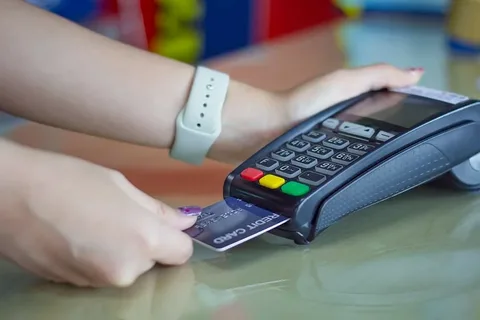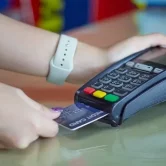- Your cart is empty Browse Shop
The Future of Payments: Why Card Machines Are Here to Stay

Have you ever found yourself fumbling for change while a long line of impatient customers grows behind you? The rise of card machines has fundamentally changed how we think about payments, and their dominance shows no sign of waning. In this article, we’ll examine why these machines — particularly mobile card machines — are essential for small businesses looking to thrive in a tech-savvy world. You’ll learn about their benefits and how they can enhance your business operations in an increasingly cashless society.
Introduction to the Future of Payments
The future of payments is leaning heavily into seamless technology, balancing convenience with security. While traditional card machines paved the way for cashless transactions, innovations such as mobile card machine for small business are revolutionizing how small businesses interact with their customers. Imagine a world where a simple tap of a smartphone or smartwatch at a pop-up shop not only processes payments instantly but also gathers customer data to enhance experiences.
This shift doesn’t merely improve transaction efficiency; it also creates a more personalized shopping atmosphere. Small business owners can leverage mobile card machines to engage customers directly, whether they’re at a farmer’s market, a festival, or even a home appointment. Furthermore, as blockchain technology gains traction, merchants can look forward to lower transaction fees, making every swipe more profitable.
Evolution of Payment Processing Technology
The evolution of payment processing technology has dramatically transformed how businesses handle transactions, particularly with the rise of card machines. Once bulky and complex, these devices have now evolved into sleek, user-friendly terminals that enable businesses of all sizes to accept a range of payment methods. This shift has empowered small businesses to compete on a larger scale, as mobile card machines now allow entrepreneurs to conduct sales anywhere — from pop-up shops to farmers’ markets.
Moreover, advancements in contactless payment technology have reshaped consumer expectations, with speed and convenience becoming paramount. Customers today favor checking out with a quick tap of their card or smartphone, which not only enhances the purchasing experience but also boosts overall customer satisfaction. As security measures advance, including biometric authentication and tokenization, merchants can embrace these innovations with confidence, knowing they protect both their customers and themselves. Ultimately, the continuous transformation of payment processing is not just about technology; it’s about creating a seamless, efficient, and secure experience for both businesses and consumers alike.
Advantages of Using Card Machines Today
In today’s fast-paced digital economy, card machines have transformed the way businesses transact. One significant advantage is the immediate increase in sales opportunities; consumers are more likely to complete a purchase when they can pay by card, eliminating the need for cash. This is particularly crucial in a world increasingly leaning towards cashless transactions, where convenience is king.
Moreover, card machines offer enhanced security features that protect both businesses and customers. With advancements such as EMV chip technology and contactless payments, the risk of fraud is significantly reduced. This not only fosters trust but also enhances customer loyalty, as patrons appreciate a seamless and secure transaction experience.
Additionally, the analytics provided by card transaction data can unlock invaluable insights into consumer behavior. Businesses can analyze trends, track inventory efficiently, and tailor marketing strategies accordingly — factors that give them a competitive edge. Ultimately, integrating card machines into operations is not just about keeping up with technology; it’s about leveraging it to thrive in an ever-evolving market landscape.
Mobile Payment Integration and Compatibility
Mobile payment integration is not just about convenience; it represents a seismic shift in consumer expectations and business operations. As more businesses embrace digital wallets and contactless transactions, the focus is shifting toward compatibility with various platforms and devices. This ensures seamless transactions regardless of the user’s hardware or preferred payment method. For companies, investing in versatile integration solutions can enhance customer loyalty, as users feel empowered by the ease of their purchasing experiences.
Moreover, the rise of e-commerce has amplified the need for mobile payment systems that accommodate diverse user preferences, from bank apps to cryptocurrency wallets. Businesses that prioritize an omnichannel payment strategy are better equipped to engage a broader audience, ultimately driving sales growth. With an ever-evolving technology landscape, staying ahead means not only adopting new payment methods but also continuously optimizing the user interface to make transactions as intuitive and frictionless as possible. In this dynamic environment, the ability to integrate emerging payment technologies can differentiate a brand and position it as a forward-thinking leader in customer service.
Why Card Machines Endure
In an era defined by digital wallets and cryptocurrency, card machines continue to thrive, carving out a unique niche in the payment landscape. One reason for their resilience lies in their tangibility; customers appreciate the immediate and straightforward nature of swiping a card. This familiar ritual not only fosters trust but also alleviates concerns about security, as many consumers feel more comfortable using a physical card than entering card details online.
Moreover, card machines are increasingly adaptable. Modern models come equipped with advanced features such as contactless payment options, integration with loyalty programs, and detailed analytics that help businesses understand customer behavior. As they evolve to meet the demands of both merchants and consumers, they offer a seamless bridge between traditional retail and emerging digital trends. This flexibility ensures that card machines remain relevant, supporting businesses in creating personalized shopping experiences that resonate with today’s tech-savvy clientele.
Lastly, the global push toward financial inclusivity emphasizes the role of card machines in reaching underserved populations. In various regions, these devices can significantly enhance payment accessibility, allowing everyone from bustling urban cafes to remote rural markets to engage in the digital economy. As businesses recognize the importance of inclusivity and bridge the gap between different payment methods, card machines maintain their position as essential tools for modern commerce.
Conclusions
As we navigate an increasingly digital landscape, the shift from cash to card machine payments has transformed the way we conduct transactions. This evolution has not only streamlined the checkout experience but has also introduced new levels of convenience and efficiency. The ease with which we can now complete purchases has reshaped consumer expectations, pushing businesses to adapt swiftly to remain competitive. While some may reminisce about the tactile nature of cash, it’s clear that card payments are here to stay. Embrace this change to enhance your purchasing experience, and keep an eye out for the next wave of payment innovations that could make your life even easier.




